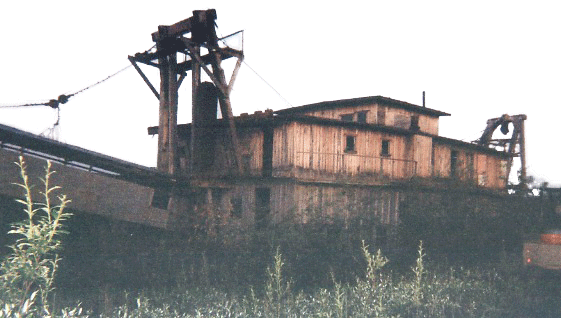
Arctic Miner™
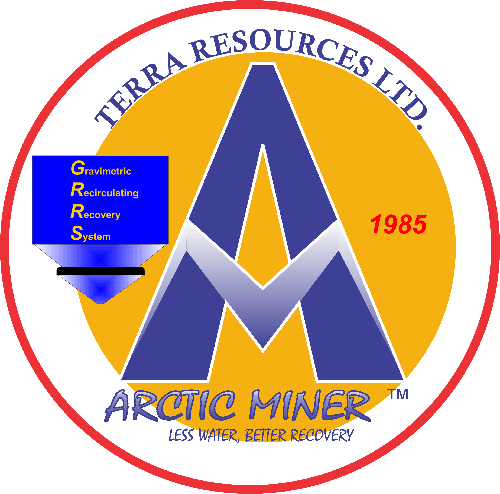 The Arctic Miner™ alluvial recovery system was developed in 1985 by Cyril L. Wood (1926-2003) and Lawrence D. Wood in response to ever more restrictive alluvial mining water quality constraints. The Arctic Miner™ flow sheet reduces system water requirements, and enhances fine gold recovery. The Arctic Miner™ is also trade-named Gravimetric Reciculating (Mineral) Recovery System: GRRS™ for short. (Mining)
The Arctic Miner™ alluvial recovery system was developed in 1985 by Cyril L. Wood (1926-2003) and Lawrence D. Wood in response to ever more restrictive alluvial mining water quality constraints. The Arctic Miner™ flow sheet reduces system water requirements, and enhances fine gold recovery. The Arctic Miner™ is also trade-named Gravimetric Reciculating (Mineral) Recovery System: GRRS™ for short. (Mining)
Arctic Miner™ alluvial recovery systems are a unique, Alaska-based development brought about by the need to meet or exceed the world's most stringent water quality standards, yet afford the maximum fine gold recovery from an alluvial deposit. This mineral processing concept was designed to provide a completely self-contained, mobile mineral processing solution. Our first system was built in 1985. Our systems have operated on the Hammond River, 250 miles north of Fairbanks, Alaska, on Goldstream just outside of Fairbanks, on both Gold Creek and Busch Creek in the Talkeetna Mtns., and Willow Creek in Hatchers Pass, north of Palmer, Alaska.
Features
Arctic Miner™ alluvial recovery systems feature on-board water recycling systems, diesel powered, 3PH AC generators, multi-stage recirculating mineral jig mineral classification circuits, hydraulic leveling, and screening plants. Wheeled or skid mounted chassis can be provided to meet the requirements of the operating environment. Each plant is built to the customer's specification and can be provided with all or a partial equipment compliment. Each system is built with remote, Alaska operations in mind, giving the maximum in durability and recovery, while maintaining low maintenance and operator training requirements.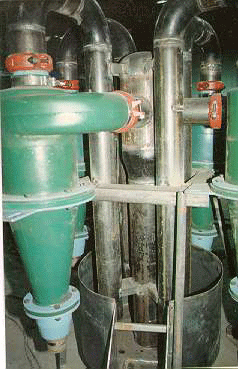
We build mobility and modularity into the plants to allow overland transport where there are no roads. Hydraulic leveling, water recycling and multi-stage mineral recirculation are incorporated into the plant. The Mk242 prototype was pulled approximately 100 miles overland by cat-train to its first operating site, then another 45 miles overland to the second site after completion of the first project.
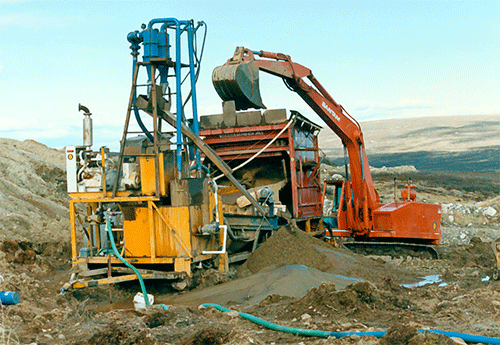
We use Pan-Am style jigs
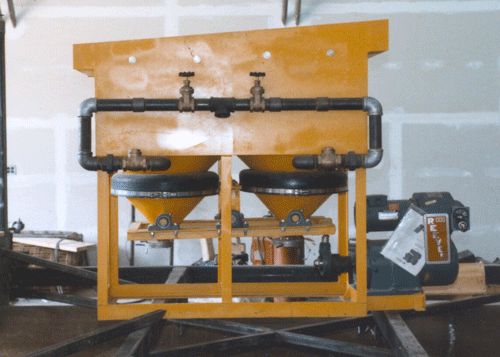
The MK series Arctic Miner™is equipped with Pan-American type mineral jigs as the primary mineral classification component. These jigs are configured as either duplex (D) or single cell (S) sets. Other variations include duplex liner cell configurations and circular configuration of both duplex (DC) and single cell (CSC) jigs. Depending upon configuration and target primary jig capacity, up to four sets of mineral jigs arranged in a mineral recirculating configuration may be present. A standard duplex 42IN X 42IN duplex Pan-American type jig has a -1/2IN feed capacity of approximately 20 cubic yards/hr.
The Pan-American type duplex mineral jig is superior to any other form of mineral jig, because the diaphragm responsible for the mechanical energy is positioned directly underneath each hutch (cell), giving maximum energy transfer to the fluid medium up through the jig bed. Pan-Am duplex mineral jigs come in three primary sizes: 42IN X 42IN rougher jigs, 26IN X 26IN scalper jigs and 12IN X 12IN finishing jigs. Roughers have been built as large as 60IN X 60IN for the hutch size. Triplex hutch (cell) configurations can also be provided. It should be noted that if the recovery plant is properly managed, the primary cons discharge will be from the first hutch (cell), with little or no discharge of solids from the second hutch (cell).
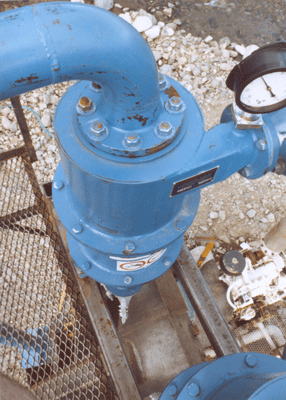
A mineral jig system is far superior to any known sluicebox system for gold recovery. Where a significant fraction of fine gold (-65) is present, one needs to match the recovery goals and the recovery plant with known gold. Leaving signifcant values remaining on a property due to poor primary recovery plant performance is the reason why many locations in Alaska are in their 4th to 5th generation of mechanical mining.
Another advantage of using jigs is that, dependant upon the number of stages, the jigs classify by gravity and size of the particle, because of screens in the jig beds. With each stage, the concentrate is continually reduced in particle size from one stage to another with the + fraction of recovered gold remaining in the jig bed until system cleanup.
A properly managed Arctic Miner™ three stage mineral jig system should recover 95% +150 gold.
System Designations
The Arctic Miner™ alluvial recovery systems GRRS are designated by Mk and a number. The first number is the number of primary mineral jigs in the system. The rest of the numeral designates the the size of the primary mineral jig. For example, Mk142 simply designates that the system has 1 42IN X 42IN primary duplex Pan-American type mineral jig. A Mk242 has 2 primary 42IN X 42IN primary jigs. A jig unit with the primaries arranged in a circular layout would be designed by a "C" at the end. The number of primary of mineral jigs must be six or higher. If the designation of the plant includes a "C", that will designate a "Circular" primary jig system. CDC, CTC and CSC in the configuration designate a "Circular Duplex Cell", "Circular Triplex Cell" or a "Circular Single Cell" primary jig arrangement. A Mk642CSC is a jig plant with 6 42INX42IN primary jigs arranged in a circular layout having only a single cell per jig.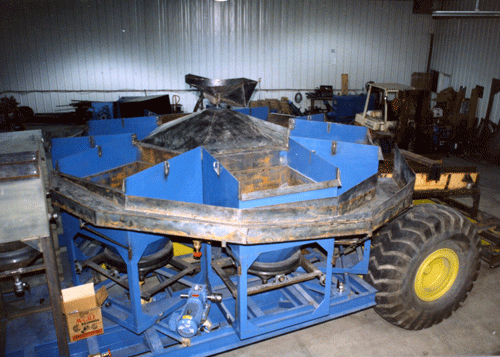
The Mk142 flow sheet was used for the Terra Wash™ TW10HM SAFR remediation system, allowing reduction of the equipment package to fit into a 40FT connex for transport, and providing for a two stage mineral recirculating Pb recovery circuit.
